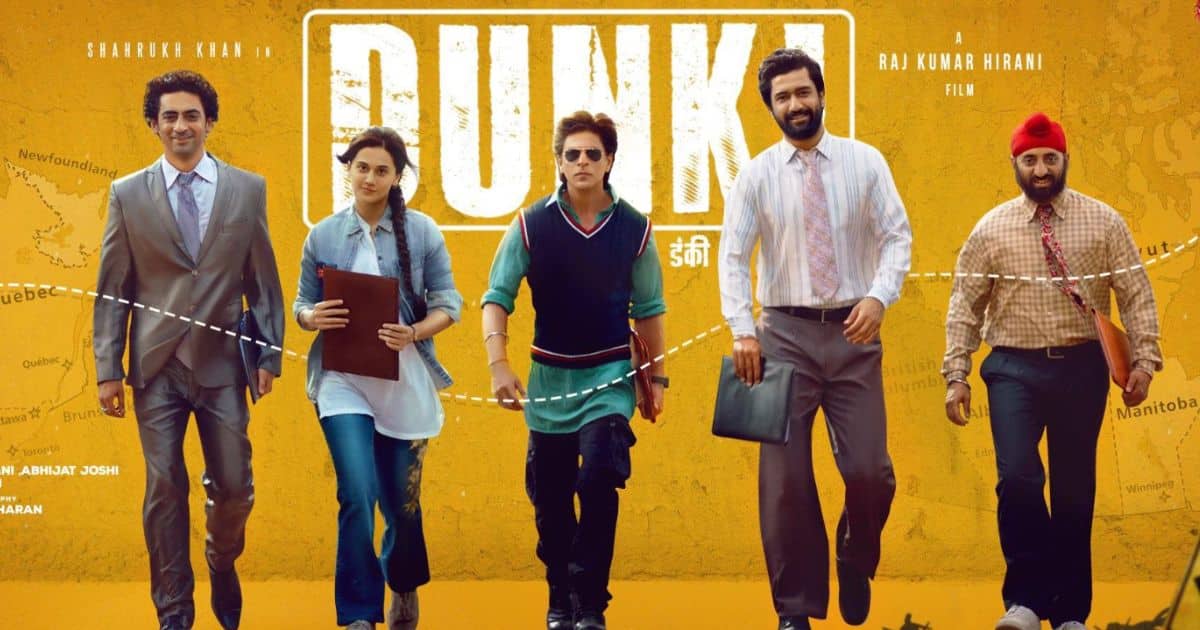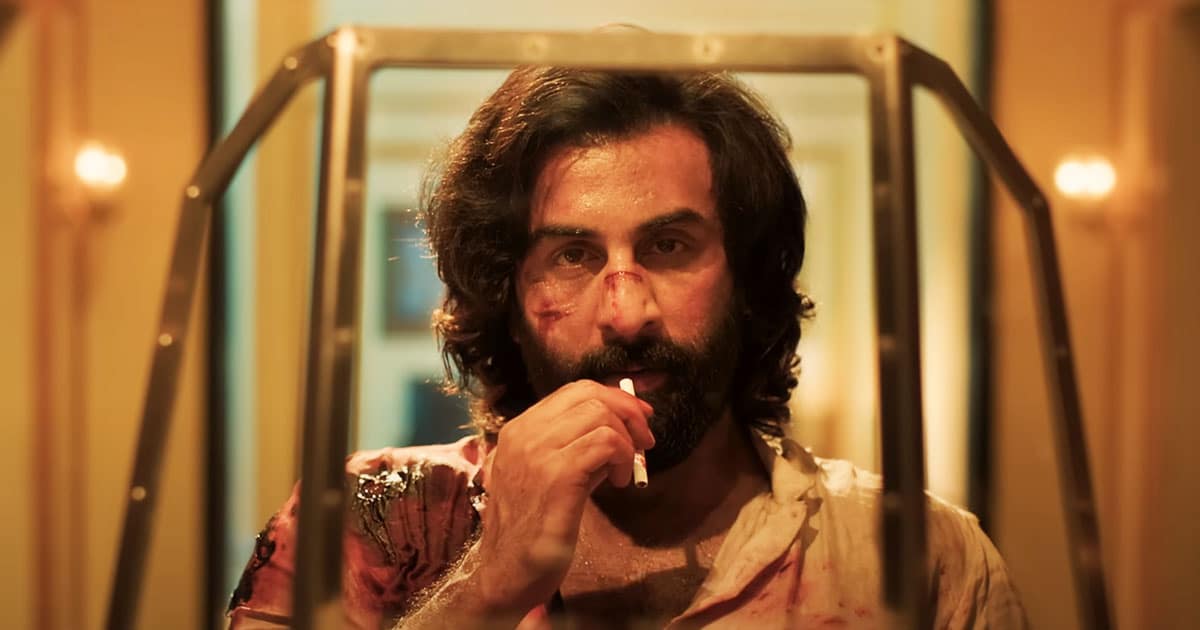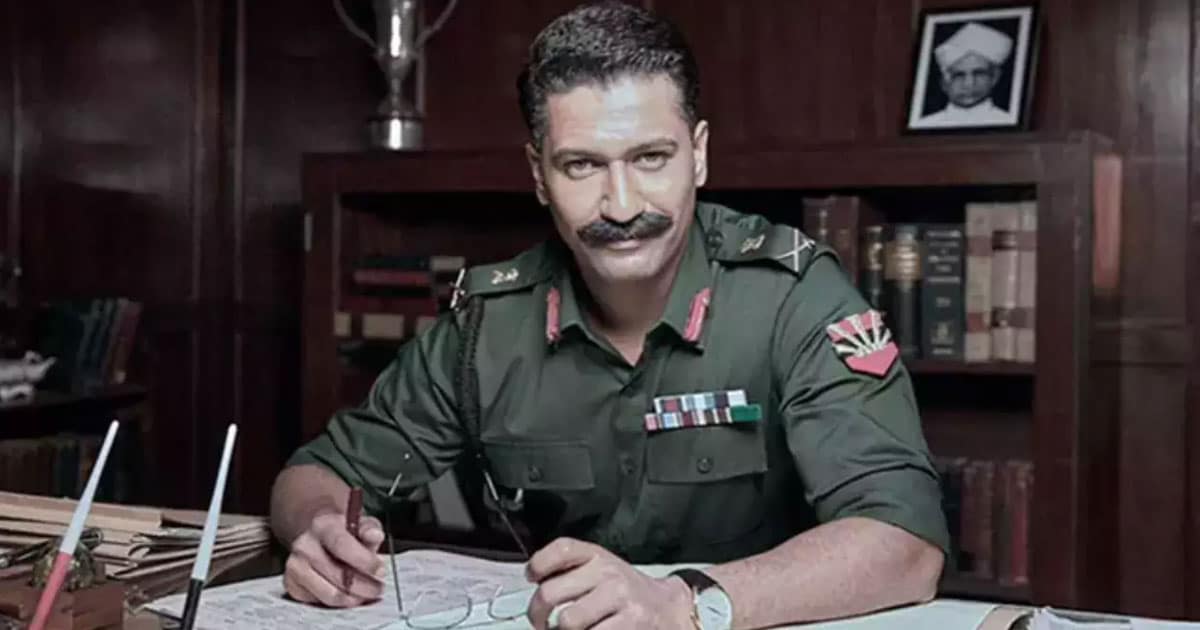Exploring the nuanced layers of Dunki, a film that endeavors to merge purpose with entertainment, and the intricacies that shape its narrative landscape.
As the lights dim and the curtains rise, the collaboration between the maestro of storytelling, Rajkumar Hirani, and the charismatic Shah Rukh Khan unfolds in Dunki. The film, a canvas painted with the hues of dreams, struggles, and societal reflections, is a commendable attempt to delve into the lives of those who dare to dream beyond their circumstances.

A Familiar Tale with a Missing Beat: Navigating the Landscape of Dreams
Set against the rustic backdrop of a small town in Punjab, Dunki embarks on a journey with four characters who dare to dream of a better life in London. The film, while commendable in its attempt to shed light on the arduous path of illegal immigration, falters in execution.
The challenges the protagonists face, initially presented as a fresh perspective, lack the nuanced portrayal required to elevate the narrative. Hirani’s trademark emotional logic is present, but he struggles to maintain the seamless unpredictability that has defined his earlier works.
Despite its lighthearted approach, the film’s first half stumbles with repetitive jokes that sometimes overshadow the gravity of the characters’ struggles. The spontaneity that has been a hallmark of Hirani’s storytelling appears to be missing, leaving the audience yearning for the infectious charm that characterized films like Munna Bhai M.B.B.S. and 3 Idiots.
Picking Through Repetition and Discovering Societal Gems
Amidst the echoes of repetition, Dunki manages to weave in moments of societal introspection. The film not only addresses the challenges of illegal immigration but also takes a poignant look at societal issues. The focus on immigration policies stacked against the economically deprived adds a layer of depth to the narrative, showcasing Hirani’s ability to incorporate social commentary seamlessly.
Performance Dynamics: A Symphony of Gravitas and Enchantment Gap
Shah Rukh Khan, surrendering himself to Hirani’s universe, delivers a performance that carries the weight of both gravitas and charm as an ex-army man. However, the love story between Hardy and Manu, portrayed by Taapsee Pannu, lacks the enchantment needed to sustain interest over the film’s extensive timeline. The supporting cast, including Vicky Kaushal in a cameo, injects emotional depth and occasional humor, enhancing the overall impact.
While Shah Rukh Khan’s aging looks add a layer of gravitas, reminiscent of his charm in Jawaan, Taapsee Pannu’s performance, though competent, falls short of creating the enchantment required for the audience to invest in the characters’ enduring love story.
From a Dragged First Half to Engaging Trench Struggles: Unraveling the Cinematic Journey
The film experiences a noticeable sag in the middle, with a somewhat dragged and tepid first half. However, it regains momentum with Vicky Kaushal’s cameo, injecting a blend of emotion and humor. Shah Rukh Khan’s portrayal of Hardy, navigating the trenchant struggle for survival, provides a more engaging and impactful experience in the second half.
The film’s humorous approach occasionally feels misplaced, overshadowing the gravity of the character’s plight. The second half, with its trench struggles and emotional dynamics, showcases the film’s potential to resonate with the audience on a deeper level.
The Pinnacle: A Moment of Impact in the Courtroom
Amidst the film’s undulating journey, a moment of sheer impact emerges when SRK presents his case as a refugee in the courtroom. It’s a testament to Shah Rukh Khan’s acting prowess and Hirani’s ability to infuse socio-political statements seamlessly into the narrative.
Harmonious Highlights: An Emotionally Charged Musical Ensemble
Within the auditory landscape of Dunki, specific musical components stand out, notably the compelling synergy between Javed Akhtar and Sonu Nigam in ‘Nikle The Kabhi Hum Ghar Se’ and the enchanting chemistry brought forth by Varun Grover and Javed Ali in ‘Chal Ve Vatna.’ These collaborations have the power to evoke deep emotions. However, it’s imperative to note that the remainder of the soundtrack, in comparison, leans towards mediocrity.
End Credits: Facts and Figures on a Heart-Rending Canvas
A unique aspect that left a profound impact is the use of end credits to showcase facts and figures superimposed on heart-rending images of illegal immigrants. This masterstroke adds a layer of authenticity to the film, emphasizing the gravity of the issue at hand. It is a poignant reminder that, beyond the fictional narrative, the struggles depicted in Dunki mirror real-life challenges faced by many.
Conclusion: One-Time Watch with Noble Intentions
Dunki is not the zenith of Hirani’s cinematic endeavors. However, it manages to offer moments of laughter and introspection. With its noble intentions of shedding light on the challenges poor illegal immigrants face, the film successfully avoids unnecessary commentary and controversy.
While the first half may seem unnecessary in its attempt to infuse humor, the second half, with its engaging trench struggles and emotional dynamics, makes Dunki a one-time watch—especially for those seeking a family entertainer with a social message.
Dunki is an ode to dreams, struggles, and the resilient spirit that propels individuals to chase aspirations beyond societal constraints.



